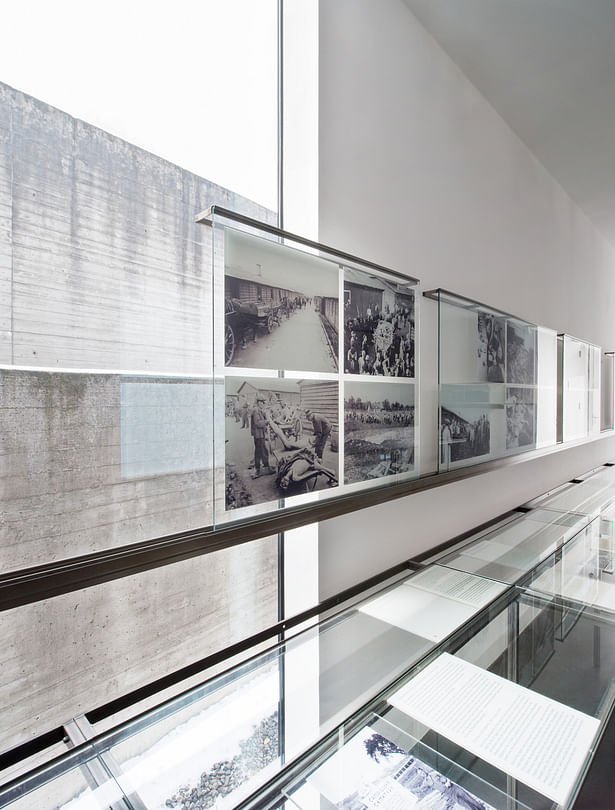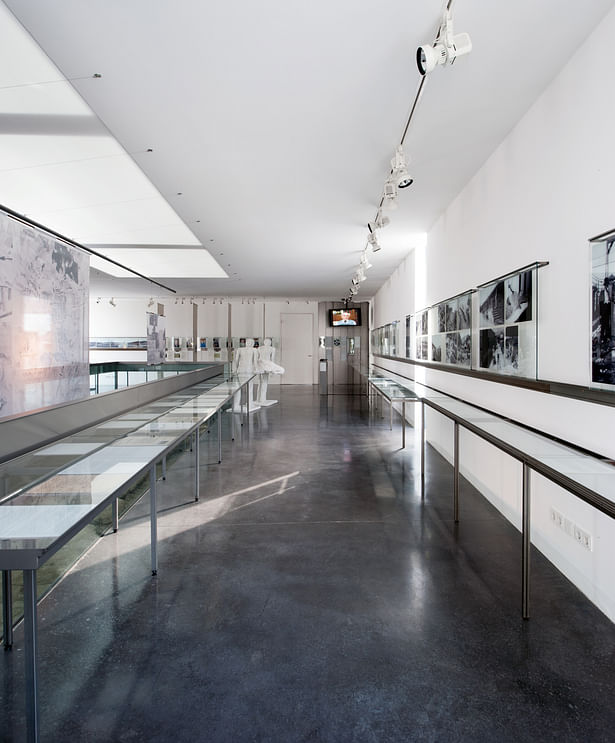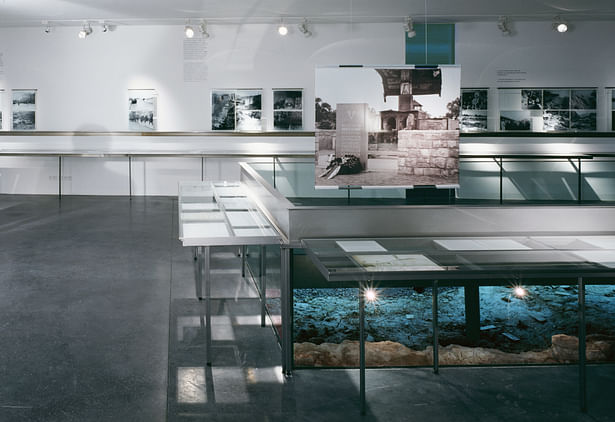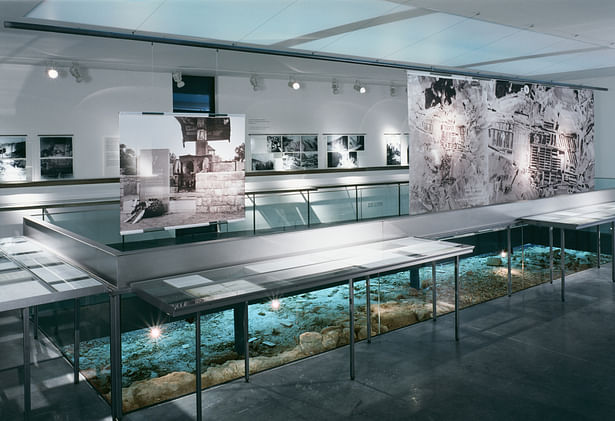
Vienna, AT
Architecture of the “Gusen concentration camp 1939–45” permanent exhibition
A memorial designed by the Italian architects B.B.P.R. (Gian Luigi Banfi, Lodovico Barbiano di Belgiojoso, Enrico Peressutti und Ernesto Nathan Rogers) was erected in 1965 on the site of the former Gusen concentration camp. The focal point of the memorial is the former crematorium ovens. In 2004 a new building was erected next to this memorial, originally intended as an all-purpose place of learning, meeting and information. During the building work, archaeological remains of the former concentration camp barracks were found. These were integrated in the new building, which was now to house a permanent exhibition.
The exhibition architecture presents the building remains of the camp and the history of the site in the context of the stories of the former inmates. It plays on the interaction between the 1965 memorial and the 2004 building, the excavation findings and the themes of the new exhibition. Five considerations went into the design of the exhibition.
Dominance of the 1965 memorial over the new building
The material and design of the exhibition architecture provides a contrast to ensure that the new exhibition site is not perceived as a second memorial in addition to the more important memorial of 1965 but rather offers a more technical point of view suggestive of mass-production and industrial processes. The new building is interpreted as a modern “barrack”, container and support structure. Rails in the form of right-angled metal profiles showing their fastenings and fitted with modular exhibition elements are placed on the wall and glass surfaces. Unobtrusive, semi-transparent “non-material” materials such as the suspended textile picture backings contrast with the visual and material heaviness of the concrete sides of the neighbouring memorial.
Interpretation of the archaeological find as contemporary documents
An aerial photo of Gusen concentration camp taken in 1944 hanging over the excavated area connects the finds to the site and the time when the concentration camp was built and relativize the “auratic” perception of the excavation findings. At the same time it acts as a room divider blocking the view of the pictures showing the liberation of the camp at the end of the exhibition.
Use of the former concentration camp site as a residential area
The history of the site is referenced through the visual overlaying of historical documents with the surrounding housing. Photos showing the building of the concentration camp, a site plan and a model built by a former inmate provide a context for the exhibition amid the houses nearby.
Dialogue with the 1965 memorial
A poster hanging over the finds showing the remains of the crematorium chimney photographed in 1945 forms as “virtual” axis with the memorial. The view of the surrounding wall of the memorial is overlaid with exhibition objects showing the killing and extermination of inmates.
Perception of the exhibition at two levels
The exhibition material is arranged in two successive levels offering a low-threshold introduction to the exhibition themes with the option of studying the individual themes in greater detail. The dominant first level has large vertical photographic displays. They start by showing the main sites in the camp and go on to deal with the history of the camp and the individual experiences of the inmates. The second level, which provides in-depth information on the various themes, contains documents, lists and memos. They are presented horizontally, guiding the visitor thematically through the exhibition.
Text: Bernhard Denkinger
Status: Built
Location: A-4222 Langenstein, AT Georgestraße 6 (near St. Georgen/Mauthausen)
Firm Role: Exhibition Design
Additional Credits: Content: Bertrand Perz (curator, concept consultant), Christian Dürr, Ralf Lechner, Stefan Wolfinger (curators).
Photographs: Andreas Buchberger.





